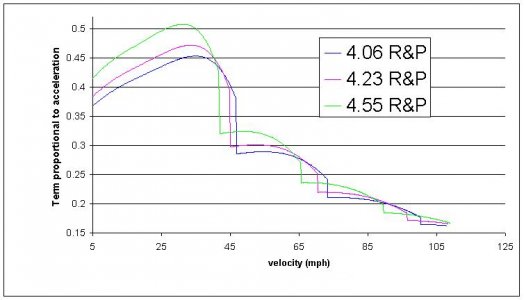Your car obviously is very good in the ¼ mile, nobody is arguing that, but I think you are taking it personal that they are questioning how you achieved the result. To answer your question and give you an idea of how weight reduction and power addition affects 0-60 and ¼ mile, here are some results for stock 91 NSX. The net affect would be lower for your car because it is already faster.AJKS said:So let me get this straight. Because a computer simulation that does not take into account any mods, a guy (SJS) who says it cant be because he broke out his slide ruler and it did not add up, and nsxtacy saying that my car just hooked better one night compared to the next, I have managed to inturpit that my NSX has done the imposible. WOW! I am glad I did the R/P now.
SJS, nsxtacy please tell me this, did my IHE and light other mods get me down to the 4.07 0-60 and 12.4 in the 1/4?
- 100 pound weight reduction lowers 0-60 times by 0.16 sec and ¼ mile by 0.16 sec
- Adding 15 HP lowers 0-60 times by 0.31 sec and ¼ mile by 0.32 sec
- 4.23 R&P by itself lowers 0-60 times by 0.13 sec and ¼ mile by 0.10 sec
Attached is the graph I promised. This shows the shift points and how a lowered gear R&P doesn’t always improve acceleration.
Bob




